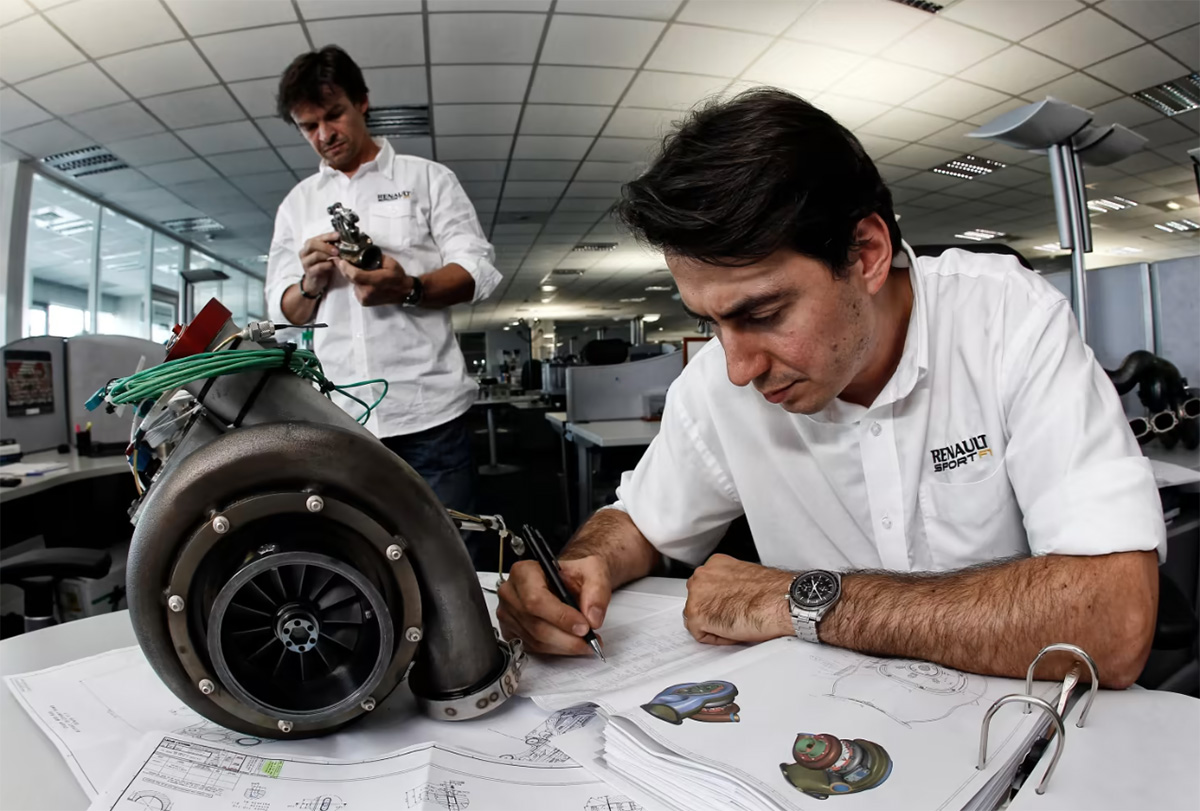Turbos are great, aren’t they? They give your car more power and speed, plus a nice sound! But what is actually happening when your car activates its turbo?
Turbos work by increasing the volume of air entering the combustion chamber. The turbocharger is a small turbine that has fan blades shaped like a fan. When the engine draws in air, it passes through the turbocharger’s fan blades which turns them into a fast-moving gas. This gas then enters the engine where it combusts with the air already in the cylinder, increasing power and speed. The turbo’s main purpose is to increase an engine’s horsepower without having to increase its size and weight.
Turbos were first used on aircraft engines in 1900. In 1906 General Motors’ research and development team began experimenting with turbochargers on diesel engines. They found that by using a turbine they could quickly reach the desired speed of their diesel engine while using less fuel than traditional methods. This would save them a lot of money over time.
In 1910, Alfa Romeo introduced the first gasoline fuelled automobile to use a turbocharger. The following year General Motors’ research and development team began work on an oil-fired turbine for their Chevrolet “20-30” series of cars. In 1912 they completed their first production model with this new technology which produced seventeen horsepower at 800 RPM. Turbos were very popular in aircraft engines because they could reach very high altitudes where traditional engines would fail. They were also used on submarines and even some cars because they had a very small size, weight, and power output which made them ideal for these types of vehicles.
Turbos are still being used today in high-performance engines. The reason why turbos are so popular is that they increase horsepower while keeping the engine small size and lightweight. This makes it easier to produce more horsepower without having to rebuild the entire engine or make it larger and heavier. Turbos are also found in many different vehicles, including trucks, cars, and even boats.
The main disadvantage with turbos is that they require exhaust gas to work which means that the engine has to be running for it to provide any power or speed increase. This can be hard to do if you want to turn your car off quickly when stopped at a light or intersection. The second disadvantage is that once there is no more exhaust entering the turbocharger’s turbine, it stops spinning. This can cause a large loss of power and speed which makes the car very slow when accelerating again.
Turbos are also quite complicated to build, so they require more maintenance than traditional engines. They have many parts that must be replaced every once in a while and if any one part breaks then all of the other parts will not work correctly causing major problems with your engine. The most common problem you’ll see with turbos is exhaust leaks due to cracked or broken seals. This can be very dangerous because exhaust gases are poisonous and can cause serious health problems if inhaled.

The first turbos were created in 1900 by French engineer Antoine Laurence, who patented the invention of a “condensing turbine”. The first car engine with a turbocharger was built in 1905 by French engineer and inventor Auguste Rateau. He designed his engine to have two double-acting cylinders placed parallel to each other, with a displacement of 664 cubic centimetres and a length of 38 centimetres. The engine was first used on a Peugeot Type 3 “Baby” steam-powered car.
When replacing your turbo, it’s important to make sure the replacement part is an exact match to your vehicle. If not, then there’s a possibility that it may not fit correctly and cause problems with your engine.
Before installing any new parts on your turbocharged car, make sure you consult your owner’s manual first for installation instructions. This will ensure that everything is done properly and safely. Be careful when working under your vehicle as well because there are many sharp objects that can cause serious injuries if you’re not careful.
The first car to use a turbocharger was the 1910 Fiat S76, designed by Giuseppe Valenzano. The first production automobile to feature a turbocharger was the French maker Peugeot’s Type T 10 HP “Minerva”. In 1911 the French firm Lorraine-Dietrich made their first trial of a turbo car. It weighed only 1,100 pounds and had a top speed of 100 miles per hour (160 km/h).
In 1913 there were about 18 different makes of cars available with turbochargers, including Renault and Panhard. The first American car to use a turbocharger was the 1920 Detroit Electric Car. In 1922, French car maker Delahaye had a turbo car on display at the Paris Salon de l’Automobile. It had two parallel rear wheels and its engine sat behind the passenger compartment.
In 1925, Chrysler began experimenting with gas turbine engines because they were quieter than traditional reciprocating (piston) engines. The first production automobile to have a gas turbine was the Chrysler Airflow in 1934, but it wasn’t until 1949 that they were used on production cars. In 1935, French car maker Hotchkiss had a turbo car with two rear wheels and an engine behind the passenger compartment. It could go from 0-60 mph (97 km/h) in 5 seconds.
During World War II, many German warplanes had turbojets instead of piston engines because they were lighter and faster. The first mass-produced turboprop aircraft was the De Havilland Vampire in 1946. In 1947, French car maker Panhard had a turbo car with two rear wheels and its engine behind the passenger compartment. It could go from 0-60 mph (97 km/h) in 5 seconds. The first production automobile to have an afterburner was the 1950 Healey Elliott “Twin-Healey” which used two Bristol engines. In 1955, French car maker Hotchkiss had a turbo car with two rear wheels. It could go from 0-60 mph (97 km/h) in 4 seconds.


